Part 1: Ten Midterm Governor’s Races To Watch
By Jefferson Fenner – Syracuse, N.Y. (CitrusTV) – The midterm elections are upon us. With forecasters predicting higher than normal turnouts, this may be one of the most influential midterms in American political history. This article is part one of our three-part series on races voters should look out for. Today, we take a look at ten state races for governor that could have a major impact over the next four years.
1. Connecticut
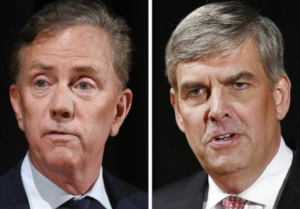
This New England state is included on this list because it is the most likely Democratic state to flip red.
Current governor Dan Malloy has overseen one of the worst economic downturns in state history. Malloy, who chose not to seek a third term, is one of the most disliked governors in America with a 70% disapproval rating.
Voters may choose to find a radical change by voting for Republican candidate Bob Stefanowski, a former business executive who runs as an outsider on a platform emphasizing economic reform and tax cuts. After winning a close primary, Stefanowski garnered an endorsement from President Trump, who said in a tweet, “It is about time Connecticut had a real and talented Governor.”
His counterpart, Ned Lamont, previously ran for senate and governor in 2006 and 2010 respectively, but lost both. This race, as Washington Post reporter Amber Phillips put it, could come down, “to whom Connecticut voters loathe most: Trump…or their current governor.”
2. Florida
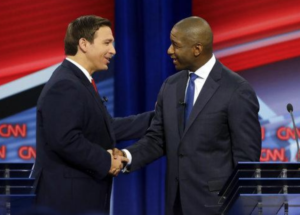
One of the closest races in the nation has had its share of vitriolic rhetoric and questionable remarks.
Rep. Ron DeSantis (FL-6) won his party’s nomination by over 320,000 votes. DeSantis has garnered the President’s support and has supported his agenda. He has also frequently talked about his service in the Iraq War and his time as a prosecutor in the Navy’s JAG corps.
He runs against Andrew Gillum, the Mayor of Tallahassee who is trying to become the state’s first African-American governor. Gillum won his primary in a close race, beating out former congresswoman Gwen Graham by under 45,000 votes. Gillum has run on a progressive agenda, supporting single-payer healthcare and a $15 minimum wage, which earned him the support of Sen. Bernie Sanders.
This race has been nasty from the beginning after DeSantis went on Fox News saying, “the last thing we need to do is monkey this up by trying to embrace a socialist agenda.” Many people are viewing this as a racist remark, and it set the tone for one of the nastiest gubernatorial races this year.
3. Georgia
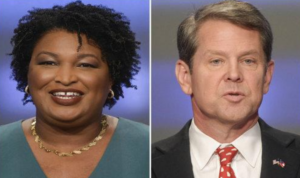
A recent controversy surrounding voter suppression in the state may lead to the Peach State electing their first Democratic governor in 20 years.
Stacey Abrams was the former Minority leader in the State House. Her campaign highlighted this experience, while also advocating for strengthening the state’s education system and improving infrastructure. If elected, she would not only become the state’s first female governor, she would also be Georgia’s first black governor. In terms of national importance, Abrams would become the first black woman to be elected governor of a state.
Brian Kemp is Georgia’s Secretary of State and has been running on a “Georgia First” platform, an echo of the “America First” stance Donald Trump ran on in 2016. He says he will treat rural Georgia as important as Atlanta, and has promised to, “always put hardworking Georgians first.”
This race has a controversial background after an Associated Press report revealed that Kemp stalled over 50,000 voter registrations, most of which are African-American, due to problems with their information. Some have called on Kemp to resign, which just adds to the controversy surrounding this tight race.
4. Illinois
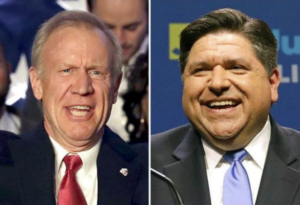
Despite terrible favorability ratings, the incumbent governor of Illinois is trying to hold onto his seat.
Bruce Rauner took back Springfield for the Republicans in 2014 after a 12-year reign for Democrats. Since then, Rauner hasn’t been liked by Illinoisans, given his 62% disapproval rating. Rauner hasn’t led a single poll, including hypothetical matchups in the middle of primary season. The governor has tried to get support by convincing Illinois that he is in the middle of solving long-term issues the state faces, and has tried to position himself as the man taking on the state’s political elite.
However, his opponent isn’t part of that political elite. Pritzker is a venture capitalist who has managed to swat away any criticisms of his wealth by diving into his family’s rags-to-riches story. He has managed to villainize Rauner by tying him to Trump, while touting himself as a supporter of progressive values. Not only is Pritzker outraising him by over $85 million, he still has a good chunk of cash leftover with three weeks to go in the election. Combine this with the favorable poll ratings, and it’s clear that Illinois won’t be red for much longer.
5. Kansas
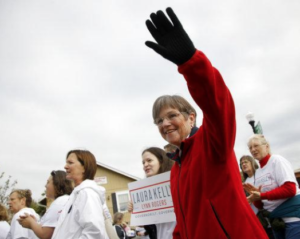
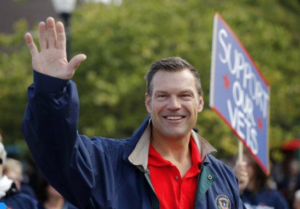
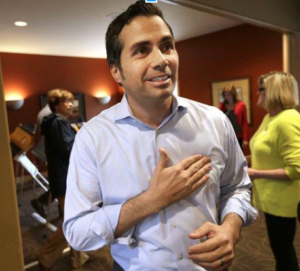
One of the few races with a popular third party candidate could see a major vote split.
Secretary of State Kris Kobach has been a longtime ally to the President and was the head of Trump’s commission on voter fraud. He has campaigned on his work with Trump and his time in the Department of Justice after the September 11th attacks. At the same time, he is running as a fiscally responsible candidate, promising to keep education funding intact and maintaining a low tax rate.
One of his opponents, Laura Kelly, has served in the state senate since 2005 and has been a long-time advocate for improving mental health services. She has been attacking former Gov. Sam Brownback, who resigned in January to become an ambassador for religious freedom. She said tax cuts that Brownback implemented were “an attack on who we are as Kansans.”
However, an independent businessman, Greg Orman, has the potential to split votes on both sides of the aisle. Orman previously ran for Senate in 2014, but lost to incumbent Pat Roberts. During that race, he was able to gain support from both Democrats and Republicans, which has carried over to this year. Most recent polls show Orman getting 9% of the vote, which seems to hurt Kelly, as she is behind by only 1%. Orman’s presence in an already close race makes this a must-watch election on November 6th.
6. Maine

This race will be defined by the man leaving office.
Maine’s two term governor, Paul Lepage hit his term limit and won’t be running for his old seat. Lepage is widely known for comments that can be called inappropriate at best and racist at worst. He has previously said that drug dealers in Maine are people from out of state, “with the name D-Money, Smoothie, (and) Shifty.” When defending these comments, he said “black people come up the highway and they kill Mainers.” In addition to his comments, Lepage is also known for his conservative politics, being a staunch opponent of expanding Medicare in the state.
Like it or not, this race will be defined by Lepage, especially as both candidates try to distance themselves from him. Janet Mills, the Democratic nominee and the state Attorney General, has promised to lead Maine in a new direction which includes expanding Medicaid coverage.
Her opponent, businessman Shawn Moody, has created separation between him and Lepage by running as a commonsense conservative that isn’t tied down by politics in Washington. However, he manages to stick to the same conservative values by advocating for job growth over welfare and cutting waste in the state budget.
7. Nevada
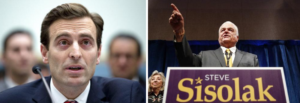
Like Maine, this race may also be defined by the previous governor, but not in a bad way.
Brian Sandoval is one of the most popular governors in the nation. The moderate republican hit his term limit and has proved to be an important factor into this race by staying out of it. Sandoval has said he won’t endorse any candidate for governor, including his party’s nominee state Attorney General Adam Laxalt. The more conservative Laxalt and Sandoval have gone back and forth in the past on issues like corporate taxes and deporting illegal immigrants.
Surprisingly, the Democratic nominee, Clark County commissioner Steve Sisolak has come out in support of the Republican governor’s initiatives, including plans to increase funding in public schools. This has seemed to work, as the most recent poll shows Sisolak ahead by a slim margin. If he can pull it off, Sisolak becomes Nevada’s first democratic governor in the new millennium.
8. New Mexico
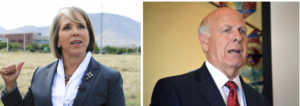
With unpopular governor Susanna Martinez hitting her term limit, two congressmen step up to take the seat.
Rep. Steve Pearce (NM-2) has been slinging mud with attack ads targeting Rep. Michelle Lujan Grisham’s record on crime and her previous work with a business consulting group, calling her “shamelessly corrupt.” Lujan Grisham has denied all these claims saying she was misrepresented in the ads.
Both candidates are focusing on job creation while the state’s unemployment rate hovers around 5%. Pearce’s plan tackles job creation in oil production and timber, while Lujan Grisham looks to develop educational programs in cybersecurity and bioscience at New Mexico’s state university system.
9. Ohio
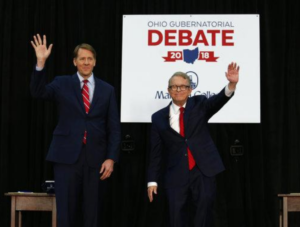
This is a race that will be hard to predict thanks to the undecided voter.
Ohio’s Attorney General Mike DeWine will try to keep the seat red after Gov. John Kasich hit his term limit. DeWine has been in political office since 1976 with stops in the House, Senate and as the state’s Lieutenant Governor under George Voinovich. His campaign has focused on his public service as he hopes to continue the progress the state made under Kasich. He has also focused his attention on the opiod crisis, developing a twelve point plan to combat it.
Richard Cordray was the director of the Consumer Financial Protection Bureau during Barack Obama’s second term as president. He has run his campaign with the hope of “putting money back in the pockets of working Ohioans” through tax cuts for the middle class and decreasing the cost of health care.
This won’t be an easy race and many voters may take up to election day to decide. A poll of over 1,000 voters conducted by Baldwin Wallace University showed DeWine up 42% to Cordray’s 39%; but 19% of respondents were undecided. This race is down to the wire and it’s almost impossible to predict as polls since September have shown close margins.
10. Wisconsin
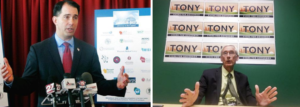
The Democrats’ best chance to vote out Scott Walker has finally come.
The former Republican presidential candidate has made a lot of enemies in Wisconsin. During his tenure, he has defunded Planned Parenthood and rejected funding to set up a health care exchange under the Affordable Care Act. Walker made national headlines in 2011, when he proposed a budget repair bill that eliminated collective bargaining rights for most of the state’s public employees. This angered union workers and protests broke out, resulting in a recall election in 2012, which Walker won.
Education has taken center-stage in this race, with Walker facing Wisconsin’s Superintendent of Public Instruction Tony Evers. Evers has come out as a strong supporter for funding public education and has criticized Walker’s lack of effort towards the matter as governor. Walker, meanwhile, has countered with support of higher education policies geared toward reducing student debt.
The most recent poll has Walker ahead, but every previous poll in September has Evers up by at least four percent. With few undecided voters, it seems Walker’s luck may have finally run out.
Images Courtesy of AP Images

